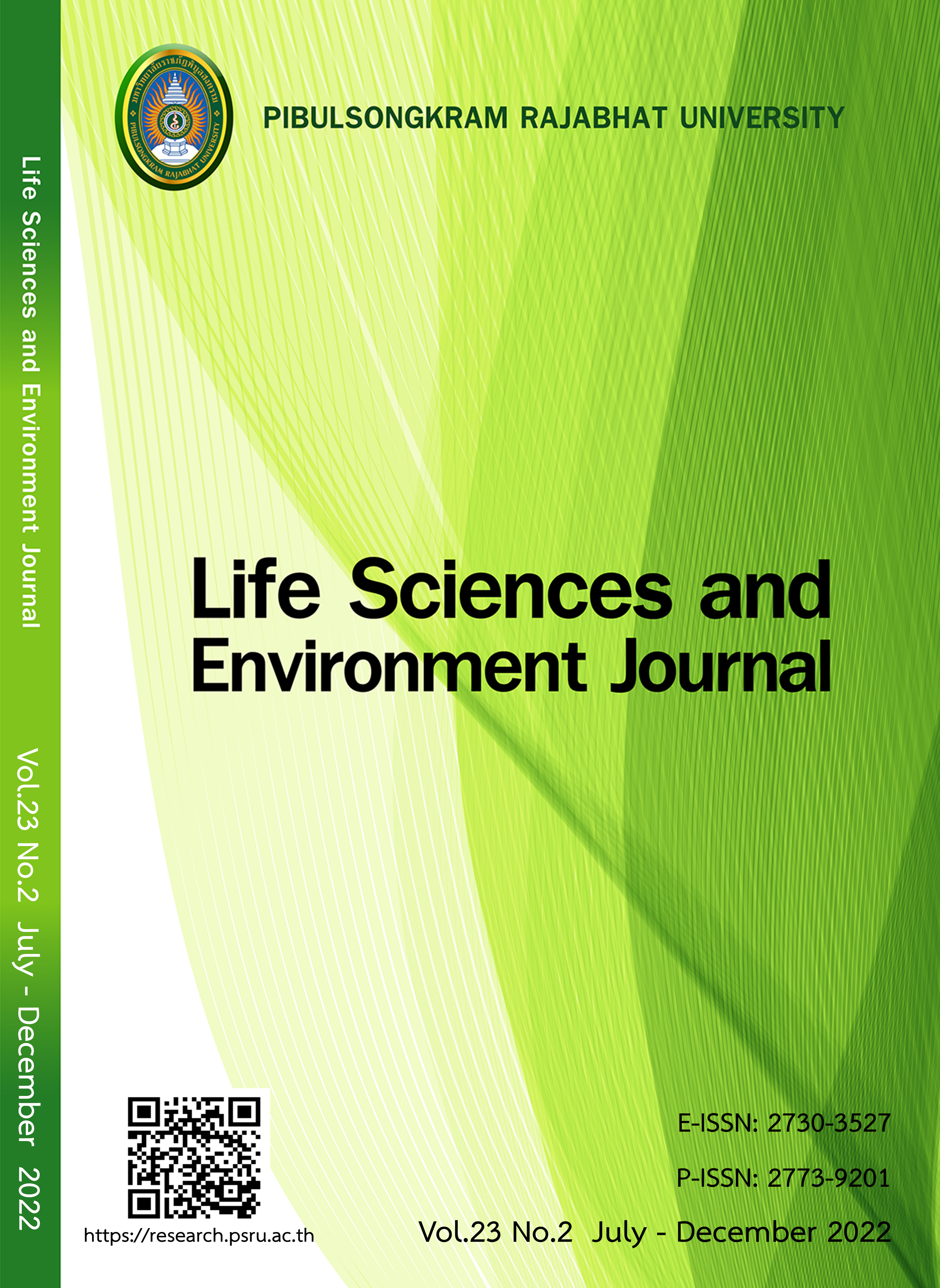ANALOGY THEORY OF MATHEMATICS AND PHYSICS MODELING OF THE TERMINAL VELOCITY AND KINETIC ENERGY OF THE 5000 METRES SPRINT VIA NEWTON’S SECOND LAW
DOI:
https://doi.org/10.14456/lsej.2022.28Keywords:
Time dependent velocity , Time dependent Kinetic energy, Correlation coefficientAbstract
In this work, mathematics and physics modeling for the 5,000 meters sprint was developed. We established a model, velocity time-dependent and kinetic energy time-dependent, for the sprint in the 5,000 meters as a function of mathematics. Substitute force time-dependent for the sprint that 3 types of the runner in the 5,000 meters into Newton's second law. In general, we used the first-order linear in-homogeneous ordinary differential equation for evaluation of the velocity depending on time and kinetic energy depending on time for the sprint in the 5,000 meters. Then the best model of force time-dependent was the modeling of 3 types. The correlation coefficient by the experiment data and the motion model 3 was 0.93, thus more than model 1 (0.89) and model 2 (0.92). In terms of biological capacity of the long-distance sprinter’s lungs, it tended to increase in the oxygen gas containment area and pulmonary capacity.
References
Atamp A. (1990), Introduction to classical mechanics, Prentice-Hall, United States America, 20-75.
Alexander FM. Effects of plymetric on the performance of 5-km road runners. Journal of Physical Education and Sport 2019;99:691-695.
Ari T, Nummela M, Leena P, Karen SA, Mike LI, Timothy ND, Heikki RK. Neuromuscular factors determining 5 km running performance and running economy in well-trained athletes. European Journal of Applied Physiology 2006;97(1):1-8.
Atamp A. Introduction to classical mechanics, Prentice-Hall, United States America; 1990: 55-63.
Helene O, Yamashita MT. The force, power, and energy of the 100 meter sprint american. Journal of Physics 2009;78:307-309.
Hutem A, Chansrakaew A, Sornchai T, Hutem S. Comparison of the mathematics and physics models fitting of velocity time-dependent for Usain Bolt in the 100 metres sprint. Journal of Biomedical Science and Engineering 2017;31:11-21.
Hutem A. Evaluation of the theory mathematics modeling of velocity function of time via the applied force time-dependent cosine oscillation of Usain Bolt in 100 meter sprint. Journal of Physical Education and Sport 2019;19:369-375.
Rattanawichai R, Moonsri P, Hutem A. Evaluation of time-dependent performance for the 10,000-metre mini marathon runner via newton’s second law of motion. Life Sciences and Environment Journal 2021;22(2):332-345.
Riley KF, Hobson MP. Mathematical methods for physics and engineering. 3th ed. Cambridge University Press, New York; 2006.
Susan M. Mathematics for physicsts, Thomson Brooks, United States America; 2004: 169-175.
Tiago MB, Pedro F, Daniel AM, Victor MR. Comparison of the world and european records in the 100m dash bya quasi-physical model, 2016, 11th conference of the International Sports Engineering Association, ISEA, Procedia Engineering 147;(1):122-126.
Tanji F, Shirai Y, Tsuji T, Shimazu W, Nabekura Y. Relation between 1,500-m running performance and running economy during high-intensity running in well-trained distance runners. The Journal of Physical Fitness and Sports Medicine 2017;6(1):41-48.
Thaigo F, Fernando OC. Prediction of 3000 m. Running performance using classic physiological respiratory responses. International Journal of Kinesiology and Sports Science 2018;3:18-24.
Alacid F, Alvero-Cruz JR, Carnero EA, Giráldez García MA, Correas-Gómez L, Rosemann T, Nikolaidis PT, Knechtle B. Predictive Performance Models in Long-Distance Runners: A Narrative Review. International Journal of Environmental Research and Public Health 2020;17:1-23.
Nuuttila OP, Nummela A, Häkkinen K, Seipäjärvi S, Kyröläinen H. Monitoring training and recovery during a period of increased intensity or volume in recreational endurance athletes. International Journal of Environmental Research and Public Health 2021;18:1-13.
Downloads
Published
How to Cite
Issue
Section
License
Copyright (c) 2022 Life Sciences and Environment Journal

This work is licensed under a Creative Commons Attribution-NonCommercial-NoDerivatives 4.0 International License.
Each article is copyrighted © by its author(s) and is published under license from the author(s).










